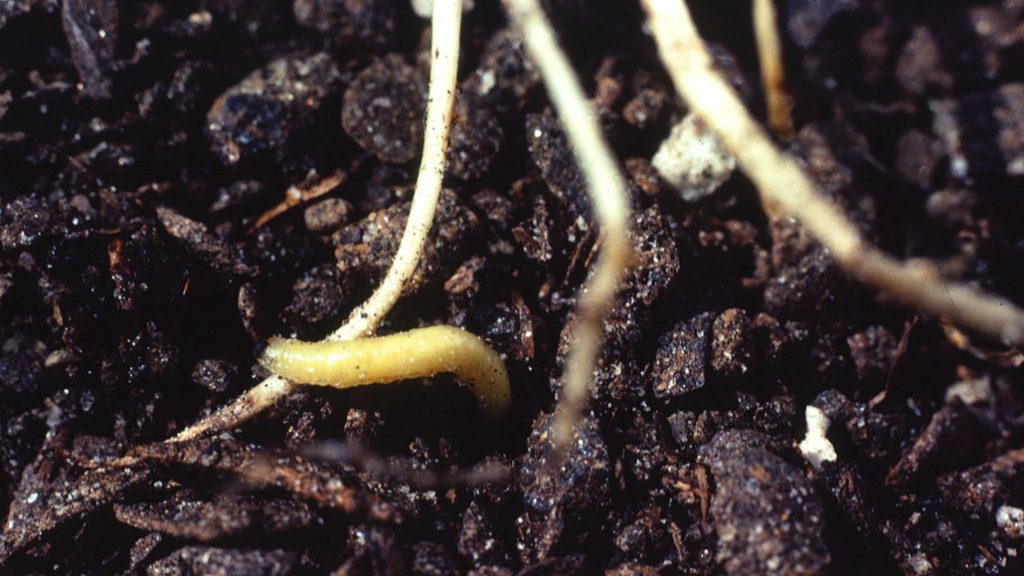Resistant insects
NO LONGER WAITING IN THE WINGS

CONTROLLING CRITICAL INSECT populations is getting harder, not easier, as more cases of pesticide resistance surface in North America.
For several years, there have been populations of western corn rootworm in the United States that are resistant to Bt (Bacillus thuringiensis)-based insecticides in corn. Soybean aphids in Iowa have tested resistant to pyrethroids, though the resistance is not yet at a level to make the insecticide worthless — but there are reports from Minnesota of complete field failures.
“The insecticide just doesn’t work. It’s like you didn’t apply anything at all,” reports Dr. Matthew O’Neil, Iowa State associate professor of entomology.
MAJOR PESTS
In North Carolina, Dr. Dominic Reisig is finding Bt resistance in corn earworms, a major pest for a wide array of crops — corn, soybeans, tomatoes, peppers, okra, hemp, cotton, and more — and earworms are especially hard to control because they have so many hosts.
“I’ve had 100% crop losses in fields where I didn’t control it,” he says. And while a number of studies suggest that earworms don’t limit yield in field corn, Reisig notes that there can be yield losses if there is a second crop stressor such as drought or other pests.
Earworms can also increase the Aspergillus flavus mould that produces aflatoxin.
Fall army worms, such as corn earworms, have traditionally been controlled with foliar insecticides but both have developed some resistance to Bt corn and cotton. Freezing winter conditions have historically killed army worms, and earworms have overwintered south of a line drawn from Maryland to Missouri, but both pests may be able to move further north if the climate continues to moderate.
Western bean cutworm, first found in Ontario in 2008, began showing resistance to the Bt Cry1F protein by about 2012, according to Dr. Jocelyn Smith, University of Guelph Department of Plant Agriculture.
There have been cases in Ontario where over-use of a single Bt trait has led to resistant corn rootworms. Since its development in the mid-1990s, Bt corn technology to control European corn borers has been a resounding success with no instances of field developed-resistance in more than 20 years, but that ended in 2018 when resistance to the Cry1F protein was documented in Nova Scotia.
CAUSE FOR CONCERN
Scientists are in the process of evaluating how the resistance may have spread within the Maritimes, but Smith suggests that Canadian farmers may have cause for concern, since the same single trait Bt corn in the Nova Scotia case is also grown in Manitoba.
One theory explaining the Nova Scotia case is that, unlike large-scale corn-producing areas, the fields affected had been repeatedly treated with a single-trait Bt hybrid that effectively selected for insect resistance.
Smith notes that much of the testing to identify Bt resistance has focused on monitoring the largest acreages, “but it seems we need to be looking at pockets like Nova Scotia. We’re discovering there are lots of pockets where seed companies are still supplying hybrids that only have a single trait.”
All three experts sound alarms about the growing challenge of controlling insects. Of pyrethroids, O’Neal says, “It looks like resistance is spreading and expanding.” Meanwhile, farmers continue to use the pesticide to get some protection, but the use continues to erode its effectiveness against aphids.
“There’s a significant problem that’s not going away, and it’s not limited to insects,” he says. “It’s the same problem we see with resistance occurring in weeds, and it won’t be limited to the pests we currently see developing resistance or to the compounds to which they are resistant.”
Smith urges farmers to attack this as a long-term problem. Talk to your extension representative about insect challenges in the area. Have another conversation with your seed dealer to learn which traits are in your seed and effective against which pests.
“You can’t just think of this one year at a time,” she says. “I wish every farmer could sit down with someone and work out a five-year plan. Then you can consider rotating crops, rotating traits, and other tools to preserve these pest management tools.” •



























